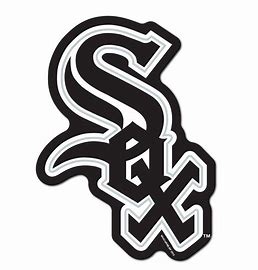Writer, “Red” Gleason, uncovered a few more gems about Sherm Lollar in his 1957 Saturday Evening Post article. I was equally intrigued with the ads in the copy that I bought for the collection many years ago from a Portland memorabilia dealer, where 15 cents sold for 3 bucks. In total, there are more than a dozen such publications from the ’50s and ’60s that I own with stories about Sherm. The purpose of this series is to combine all this information into a single source – this blog – johnstonwrites.com. Maybe it will find its way into book form? The Yogi Berra comparisons are frequent references:
“When Lollar arrived in the Yankee camp in the spring of 1947 he must have wondered why they had bothered to deal for him. Catchers on the premises included the incumbent regular, Aaron Robinson, who had hit .297 in the previous season, and Gus Niarhos, Charlie Silvera, Ken Silvestri, and Ralph Houk. There was also a twenty-one-year-old long-ball hitter who was being tried both as a catcher and an outfielder, but he didn’t seem very adapt to either. His name was Berra.”
“Berra and Houk remained with the Yankees as Robinson’s understudies. Sherman was sent down to Newark, being brought back near the end of the season when the Yankees thought his bat might be needed in the World Series.”
He responded with that previously mentioned 3-hit performance, only to be pulled from the line-up for pinch-hitter Yogi, who answered with a home run. At least, Sherm earned a ring, while Berra got his first of ten.
“In 1948 Sherman remained with New York, but played in only twenty-two games. His right hand got ripped open before the season started by a foul tip off the bat of the Braves’ Bob Elliott in an exhibition game. Berra, still a convertible catcher-outfielder played in 125 games. Yogi’s .305 batting average that year didn’t merely submerge Lollar; it washed him right out of the Yankee organization.”
First stop was the St. Louis Browns and then the Chicago White Sox, both teams owned by Bill Veeck, as in wreck, the title of his autobiography I have also read. I’m sure that Sherm felt like he had been in a horrible wreck, but it also opened the door to improvement, although it took several years in a back-up role to get there.
“Sherman credits two former White Sox managers, Paul Richards and Marty Marion, with helping him rise from mediocrity. ‘Richards made him a better receiver and a better ballplayer,’ he explains, while Marion bolstered his confidence.'”
“When I was having that terrible year in 1952,” Lollar says, “Richards called me into his office late in the season. He told me that my natural style of catching lacked appeal, that I would have to be more of a holler guy. Paul said he understood my problems because he had been the same kind of catcher that I was. I feel like I’ve always hustled in baseball, but until Paul talked to me I probably had a misconception of what ‘hustle’ meant. I hustled to first base on a batted ball, and I hustled when the ball was around me. Richards made me see that something more was expected.”
“Paul told me to show a little more animation. He wanted me to be a little more agile in receiving and to show more zip in returning the ball to the pitcher. He recommended that I run to and from the catcher’s box between innings, in stead of just strolling out there.”
“Lollar’s peculiar catching style – he works with his left knee on the ground – was suggested by Richards, one of baseball’s most original thinkers. Richards explained recently, ‘This moved him up – closer to the plate – and down – closer to the ground.'”
“Asked if he considered Lollar superior to Berra in any department of play, the Baltimore manager replied, ‘As a handler of pitchers, I’d say yes. And that’s no reflection on Berra. In the last year and a half I was with the White Sox, I’d sit in the dugout hoping a pitcher would throw a certain pitch, and ninety-nine times out of hundred, Lollar would call the pitch I had in mind. Lessons in baseball are bred from necessity, and I think Lollar, through necessity, has learned more about helping pitchers, because his pitchers have needed more help than Berra’s have.”
“Of Marty Marion, Lollar says, ‘I got a real good break when Marty took over the club late in ’54 after Richards decided to take the Baltimore job. Paul had been platooning three of us that season – Matt Batts, Carl Sawatski and me. But when Marty became manager he told me that I would catch the rest of the ball games that season and all the ball games the next season. That winter we got Clint Courtney in a trade, and I figured Marty might change his plans for ’55. But he stayed right with me, and I ended up having a good year.”
“Veteran Sox pitcher Bob Keegan agrees that Marion did a lot to build up Lollar’s self-confidence, especially by the practice of describing Sherm as a ‘manager on the field.’ Today there can be no question about Sherm’s belief in himself, and he has become the acknowledged leader of the team.”
Later that year, on August, 20, 1957, Lollar caught Keegan’s no hitter against the Washington Senators, a thrill for both of them. It was three-days before Sherm’s 33rd birthday. Keegan was an All-Star in 1954, but was sent down to his hometown Rochester Red Wings in the early weeks of 1958 and retired in 1959 after 15-years of professional baseball. He missed his chance to join Sherm in the World Series. Yogi Berra may have watched on TV like I did.
To be continued….

Leave a Reply